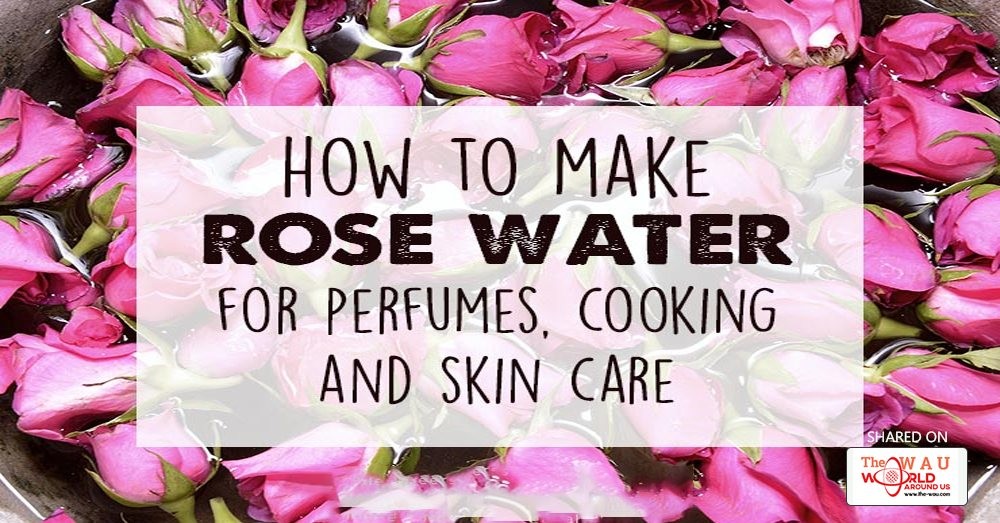Rose water is not only beautifully fragrant but extremely versatile. It has an extensive range of uses including facial toner, hair perfume, cooling mist, and linen freshener. Rose petals are edible and rosewater has a place in the culinary world as well.
Rose water can be used to replace some or all of the water in things like soap, hair rinse, and hair detangling spray. As a side note, it will have little impact on the final color of your soap and will definitely not turn it pink.
Simmering vs. Distilling
There are two relatively easy ways to make rosewater at home. The easiest and quickest way is by simmering rose petals (dried or fresh) in water. The result is a fragrant, rose-colored water. This method is suited best for recipes and uses that will not sit around very long as it has a limited shelf life.
The distilling method technically makes a hydrosol. It is also quite easy to make, albeit slightly more time-consuming, and rose hydrosol is clear and much more shelf stable.
Choosing Rose Petals
There are over a hundred different varieties of roses. If you are lucky enough to have roses growing in your garden you can use them to make rosewater. If you will be picking your own roses, do so in the early morning when the blossoms are the most fragrant. You can also purchase roses but they should be from an organic source. It is important to use pesticide-free rose petals so your finished rosewater is not full of chemicals.
It’s possible to use dried petals. I like these. They are from the Damask Rose and are very fragrant, as well as edible.
Another option is to use lavender flowers. Follow the directions below for the dried petals and use the lavender water in place of the rosewater in the following recipes.
Uses For Rosewater
There are so many ways to use rosewater. Here are some of my favorites.
Perfumed Sprays
One thing many people miss after they have made the switch to healthy options in beauty care is the scented aspect of commercial products. Often times those artificial fragrances are the selling point for perfumes, soaps, and shampoos, but they are also one of the more dangerous ingredients used in these products.
Rosewater makes a wonderful base for making substitutes for perfumed sprays. Natural shampoo, for example, leaves your hair clean and protects the natural balance of oils in your scalp, but doesn’t leave a lasting perfumed scent. You can make a simple hair perfume to add a touch of a floral scent to your hair. You can also just dab rosewater on your wrists and neck for a light hint of perfume.
Hair Perfume: Mix 1 teaspoon pure vanilla extract with essential oils in a 4 oz glass spray bottle and fill to the top with rosewater. Spritz on your hair as it is drying and style as usual. This is also great for second (or third) day hair. Spritz a bit on to freshen up. Store in the refrigerator. My current favorite combination is:
- 3 drops Patchouli
- 4 drops Ylang Ylang
- 3 drops Rosemary
- 4 drops Cedarwood
- 5 drops Lavender
- 4 drops Grapefruit
- 4 drops Bergamot
Linen Freshener: Make a linen freshener by putting rosewater in a spray bottle. You can also add a couple drops of rose or lavender essential oil. Mist on your sheets before going to bed in the evening.
...[ Continue to next page ]
Share This Post















